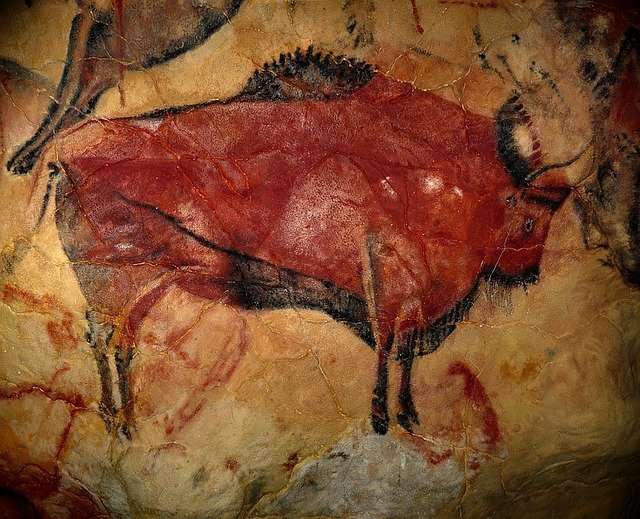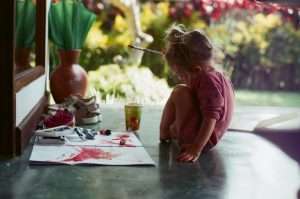The Art Nouveau movement (1890–1914) was an international response to the art of the Industrial Revolution and rapidly became an extremely influential style that spread throughout the Western world.
It was characterized by organic forms, flowing curvilinear lines, stylized nature motifs, and an emphasis on decorative ornamentation.
Art Nouveau designers used new materials such as cast iron, zinc, and wrought iron; stained glass; and ceramic tiles. These elements were often combined with painted murals or mosaics to form a highly original decorative style that made use of natural colors and materials. The result was a mixture of ancient and modern styles that came together to create what’s now known as Art Nouveau.
**Art Nouveau is therefore a descriptive term more than a single style. It’s more correct to refer to Art Nouveau buildings or objects rather than an actual style—there are a wide variety of decorative styles included in the Art Nouveau movement.**
Here we’ve attempted to gather all the most important information you’ll need in order to learn about the Art Nouveau movement, find out what it is, where it came from, how it has evolved over time, and where it is today.
Art Nouveau (French for “new art”) is a style of visual arts, architecture and design that was most popular during 1890–1910. The name arose as a reaction against the academic art of the 19th century, typified by its rigid adherence to formalism and rejection of the styles that preceded it. The movement implies a desire for it to progress, but it is not exactly clear what this means, or what form it should take.
Art nouveau design emphasised clean lines and organic forms; it was influenced by natural forms and motifs, particularly the curved lines of plants and flowers. This movement began in Britain and was largely centred there until about 1903, when France adopted it and took it up with enthusiasm. It was popularised in particular by Théophile-Alexandre Steinlen through his posters for Sarah Bernhardt’s theatre productions.
The best-known artists and designers associated with Art Nouveau were Georges de Feure, Émile Gallé, Alphonse Mucha, Louis Majorelle, Antoni Gaudí, Gustav Klimt and Louis Comfort Tiffany. Art nouveau architecture is the most important single variety of the style; its leading practitioners include Victor Horta, Henry van
Art Nouveau is a term that is synonymous with the late 19th century movement in art and design that was prevalent between 1890 and 1910. It is also sometimes referred to as ‘Style Nouveau’.
The Art Nouveau style is characterised by its flowing, organic, natural forms and asymmetry. It is also generally associated with the use of sinuous lines, floral designs and – although it is now rarely used – natural materials including wood and stone.
Art Nouveau first emerged in France as an offshoot of the reaction to the formalism of the preceding period known as the Renaissance. It was initially called ‘Style Libre’ (free style) but this was shortened to ‘L’art nouveau’ (new art). The name was coined by the architect Hector Guimard who designed more than a hundred Art Nouveau buildings in Paris during the early years of the 20th century.
In its early years, Art Nouveau was a revolt against established architecture’s reliance on strict geometry and classical symmetry. However, it quickly developed into a decorative style favoured by architects such as Victor Horta, Alphonse Mucha and Henry van de Velde.
This page explores the origins of Art Nouveau, its major
The Art Nouveau, or in French: nouvelle art, is a style that began at the end of the 19th century and lasted until the beginning of the 20th century. Art Nouveau is an international style, but mainly it refers to decorative arts.
The Art Nouveau was a reaction against what was seen as excessive traditionalism and simplicity of design in the Victorian era. This new artistic movement had its roots in Britain, Germany and France. The main artists were Henri de Toulouse-Lautrec, Alphonse Mucha, Gustav Klimt, Jugendstil and Louis Comfort Tiffany.
Art Nouveau reached its peak around 1900 and in its heyday it was the most popular style in Europe, North America and Latin America. In Central Europe it is sometimes called Jugendstil (Youth Style), Secession or Sezessionstil (Secession Style).
The main idea behind the Art Nouveau was to create a style which reflected natural forms in a free flowing way. The curvilinear lines gave this art nouveau its name – “the new art”.
Art Nouveau is an artistic movement that was founded in the late nineteenth century in Europe. It is not a true style or movement because it did not have a single manifesto or system of beliefs but instead had many designers and architects who contributed to the style.
Art Nouveau architecture is characterized by fluid curvilinear designs. The buildings are a combination of organic and geometric shapes that intermingle, creating flowing contours and textures. The style was heavily influenced by nature, especially plant forms, which were often used as major decorative elements in buildings.
Art Nouveau artists were also fascinated by the human body and used its forms to create natural-looking and flowing designs on everything from buildings to jewelry. They also incorporated sinuous curves into their illustrations and artwork, as seen in Alphonse Mucha’s film posters for the Czech film Gismonda (1894).
Artists working in the Art Nouveau style borrowed heavily from other styles, including Japanese prints, Indian cultures, Byzantine mosaics and Islamic art, as well as from nature itself.*
Art Nouveau was an international style of art, architecture and design that flourished from the mid-1890’s through the beginning of World War I. This “new art” included a wide range of visual arts, including jewelry, furniture, textiles and architectural designs. Its influence can still be seen today in art nouveau home decorating and jewelry.
The term “art nouveau” is French for “new art.” It originated in the 1870s with a group of artists who wanted to break with the past and try new things. The members of this group, who called themselves Les Nabis, created paintings that were very different in style from anything that had gone before. They painted their subjects more realistically than had been done previously, but they also used vivid colors and strange angles to enhance their paintings’ appeal. They believed that every artistic endeavor should reflect a combination of science and emotion.
Art Nouveau artists also created hand-printed cards and posters. Their work became popular throughout Europe, especially in Germany and Austria. German architects took notice of these works by French artists and started designing buildings in a similar style.
Art Nouveau architecture was not limited to any particular type of building; it was used on large buildings as well
Art Nouveau is an international style of art and architecture that developed at the end of the 19th century. The name “Art Nouveau” means “new art” in French, but it is not a particular style of art that is new, but rather a general term for works of art that are newly made or new in character.
Art Nouveau is also known as Jugendstil, a German word that means “youth style”. This name was first given to the style by its detractors. While the Art Nouveau movement had supporters in Germany and Bohemia, it was in France that it had its greatest public expression. The French Art Nouveau movement originated with the establishment of a group called the Société de l’art nouveau in Paris.
The main features of Art Nouveau are:
A rejection of the Classical Ornamentation and Neoclassicism (the dominant styles at the time)
A celebration of organic nature and its principles (such as growth, evolution and metamorphosis)
The invention of new forms, frequently from organic models
An emphasis on decorative arts over architecture, which is often neglected
Art Nouveau artists were inspired by Eastern culture and philosophies (H


